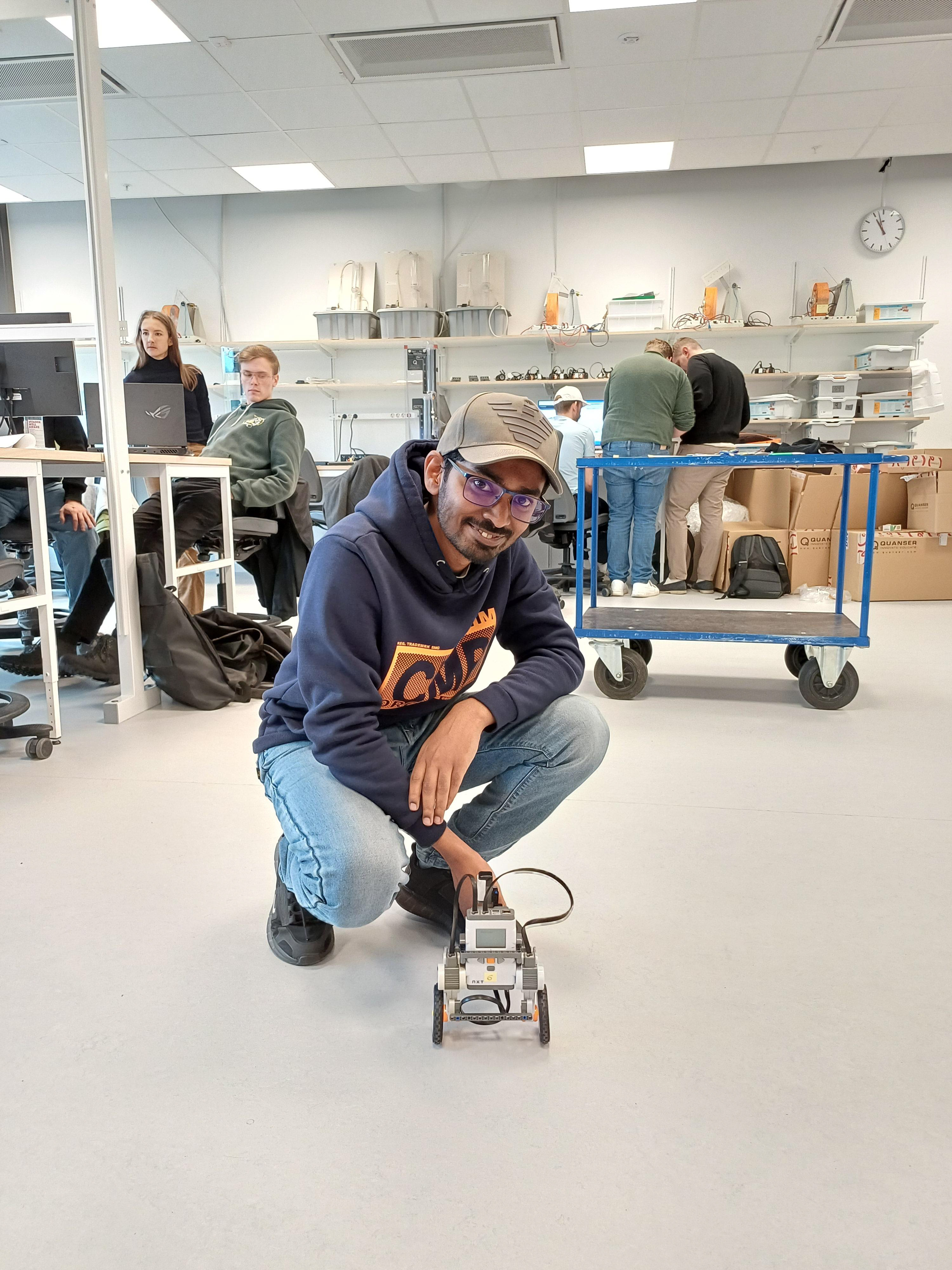About
“All models are wrong, some are useful.” -- George Box
The famous quote by British statistician George Box summarizes the foundation of model design. System models help to study system behavior to some extent without putting full effort into the design flow. It allows rapid changes, quick testing, controllable environments which reduces the design time drastically.
The following projects show my competency in model design and verification.
Keywords
Control Theory, Controller Design, Model-Based Design, MATLAB, Simulink

LEGO NXT model

Two-Tank model

Elevator model

Elevator model simulation
LEGO Segway Model
This was done as an academic lab assignment for the Control Theory course content. We simulated and deployed an LQG controller on a LEGO NXT model. The model is an inverted pendulum balanced on top of two controllable wheels and a gyroscope as an input source. In this group work, we changed controller parameters according to the MATLAB simulation results, observed the physical model behavior, and compared results from the simulation and the physical model.
From this model design, we experienced and learned about the LQG controller, the impacts of its parameter changes, and the limitations of the controller.
Two-Tank Model
This next model design was also conducted as a lab assignment for the Control Theory course. The Two-Tank system was controlled with an MPC controller. First, we simulated the tank system with Simulink and observed the behavior and then we tested the physical model with the selected parameters. Finally, we compared the two results and concluded where MPC is applicable.
In this group assignment, we studied the MPC controller performance, its limitations, and parameter tuning.
Elevator Model
This project was a part of the Model-Based Design of Embedded Software course. The task was to implement a simulation model of an elevator, verify the model coverage, and deploy it on a physical elevator model. The model was designed using Simulink. The elevator control logic was implemented by using the Simulink State Flow. The control logic was verified with Simulink Design Verifier (SLDV) and SLDV was used ConditionDecision objective to evaluate the model coverage. The physical elevator model was controlled with an Arduino Mega2550 and the State Flow controller was deployed on the Arduino by using the Simulink code generation feature.
The Simulink model can be found in my GitHub.
